The Galaxy Fold Timeline: Samsung’s incredible journey from 2011 to Foldgate
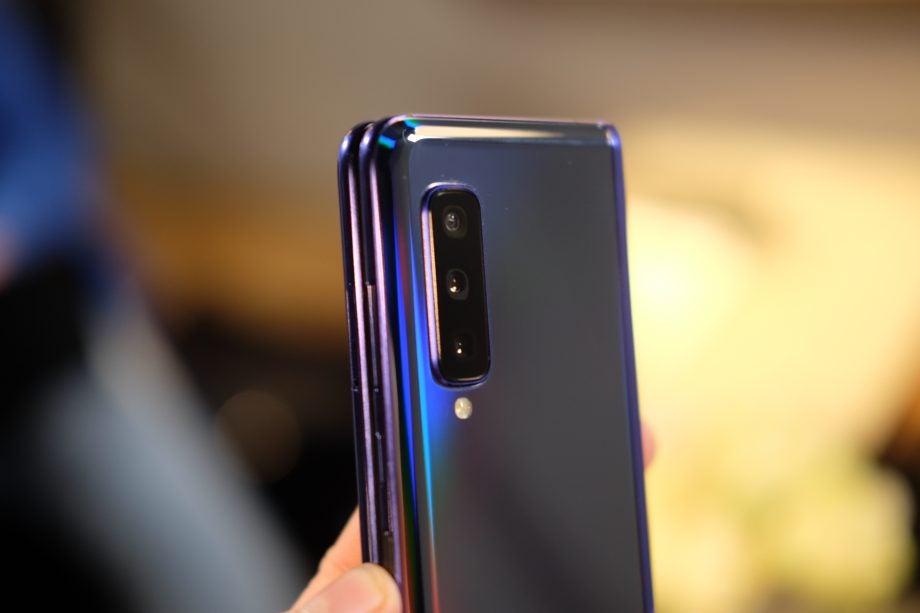
Galaxy Fold – The full history of Samsung’s folding phone efforts
The launch of the Samsung Galaxy Fold hasn’t exactly gone to plan, with the South Korean firm putting the release of the folding, dual screen smartphone-cum-tablet on hold after several journalists’ review samples stopped working after just two days.
It’s a huge blow for Samsung, which has been working on the Galaxy Fold for the best part of a decade. Get ready to feel old, because we’ve put together a timeline of the biggest folding phone developments, so you can see how Samsung went from futuristic concept to launch. Here’s how the Galaxy Fold came to be.
Read more: Folding phones
An early prototype
On May 12, 2011, researchers from South Korea’s Samsung Advanced Institute of Technology (SAIT) revealed that they had designed and built a prototype foldable device.
This prototype featured a display that could be folded in half without resulting in a visible crease in the middle, by using advanced AMOLED screen technology. During tests, the researchers found that brightness at the hinge decreased by just 6% after 100,000 folding/unfolding cycles.
Speaking to Phys.org at the time, HongShik Shim, a researcher at SAIT, said: “Our method has the advantages that mature, high-quality AMOLED display panels already exist. But for real commercialisation, some new processes and new materials must be developed, which takes about 1-2 years.”
Quirky tablet patent
On May 2, 2012, it emerged that Samsung had filed a patent application for a smartphone that could fold out to form a tablet.
Rather than a flexible display of the type we saw in the 2011 concept video, this was simply a hinged dual-screen device – a little like a Nintendo DS.
The patent depicted the device as shipping with a stylus/pointer that could be removed from the hinge.
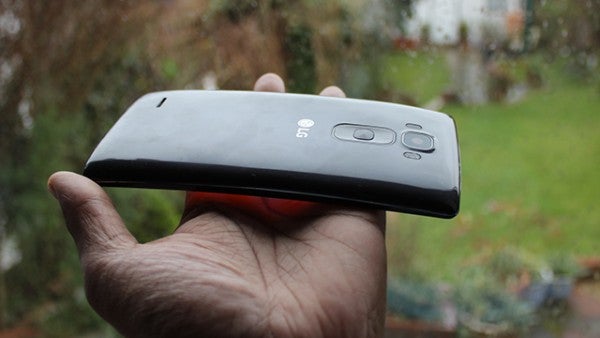
LG’s LG G Flex 2 (2015) smartphone was an early example of a phone with a slightly bent screen
Development ongoing
Fast-forward to November 2012 and the Wall Street Journal reported that Samsung was building handsets with flexible displays, and that they were “in the last phase of development”.
Devices carrying the displays were tipped to launch in the first half of 2013, and rumours even suggested the flexible screen tech would actually feature in the Samsung Galaxy S4. They were, of course, well wide of the mark.
Samsung Galaxy Q?
In February 5 2013, we heard news that Samsung was plotting a folding display phone called the Samsung Galaxy Q.
This handset was tipped to launch at Barcelona’s MWC 2013 convention later in the month, and would reportedly ship under the model number GT-B9150.
Unfortunately, that model number turned out to actually be referencing the Samsung Galaxy HomeSync personal cloud device (2013), and we didn’t see a foldable phone after all. Boo!
Flexible Note 3
In May that same year, it was reported that three different prototypes of the Samsung Galaxy Note 3 were being tested, including one that featured a flexible screen.
SamMobile cited an unnamed Samsung insider; the report confirmed that the Note 3 may feature the bendy screen tech, and land at IFA 2013. While we did eventually get a Galaxy Note 3, there was no folding screen.
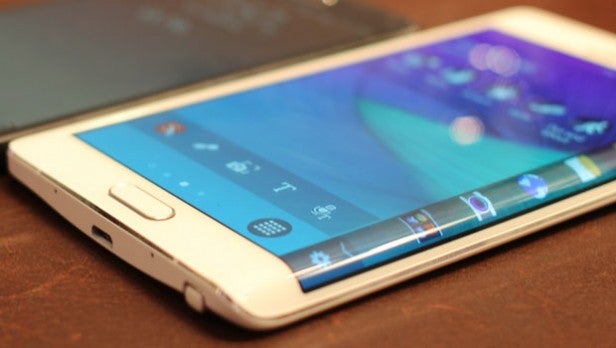
Samsung’s Galaxy Note Edge (2015) was the first time we saw a truly curved screen from Samsung
Patenting a flexible screen
Later that month, it was discovered that Samsung had filed a patent application for a flexible display.
The display was described as being able to detect the various ways users bend the screen, including folding angles and curvature. This would allow the flexible display to automatically adjust the image it was showing so it would be presented accurately.
Another concept video
In autumn, a video produced by Samsung was uploaded to YouTube, depicting a flexible OLED smartphone-cum-tablet concept.
Official confirmation of folding phones
Then on November 6, 2013, Samsung announced that it would bring folding display devices to the market at some point in the future. Unfortunately, that’s pretty much all the detail it provided.
Analysts spin rumours
In early 2014, analysts tipped Samsung as plotting a new range of smartphone form factors, including a new Galaxy handset with a three-sided bent display.
Song Jong-ho, an analyst at Seoul-based KDB Daewoo Securities, said: “The bent smartphones will be rolled out as a Galaxy variant with a few million units at the end of this year, initially taking aim at the niche market.”
He continued: “The bent device is the first step toward testing the market and gauging how it will react to foldable smartphones that are to be unveiled in the second half of next year.”
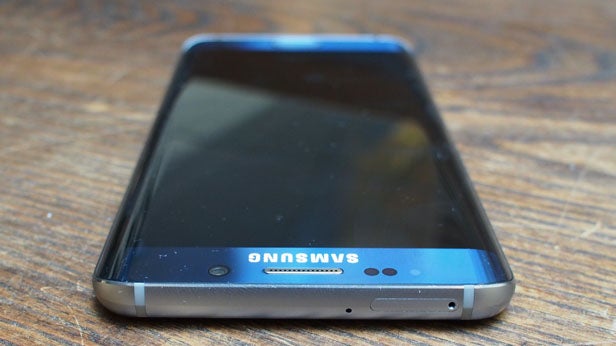
Samsung’s Galaxy S6 Edge (2015) was our first glimpse of a curved edge-to-edge display from Samsung
Galaxy Note 4 getting three-sided display?
Then in late April, a report from ZDNet Korea described how the Samsung Galaxy Note 4 would feature a three-sided display that would let you view your notifications at an angle.
This rumour turned out to be an early hint at the Samsung Galaxy Note Edge, which launched in 2015 and featured a curved screen on one side. This technology was eventually rolled out on flagship phones with the Samsung Galaxy S6 Edge, which featured a completely edge-to-edge display. And that design trend has continued right to the Samsung Galaxy S10 today.
Samsung champions flexible screens
Towards the end of 2014, Samsung claimed it would be the only manufacturer capable of producing flexible-screen phones during the next 12 months.
Lee Chang-hoon, VP of Samsung Display, said: “We will secure production capacity of 30,000 to 40,000 [flexible displays each month] by the end of next year. There will be no company [except Samsung] that has this great production capacity by 2016.”
He added: “We plan to provide consumers with a product that has a flexible display by the end of the year. However, nothing has been decided on the finished product.”
Another flexible phone patent
In March of 2015, PatentlyMobile revealed that Samsung had filed for a patent on a new kind of flexible device.
The concept paired a flexible display with a body made from a series of interlocking panels. These panels could unlock and slide when placed under pressure, allowing the phone to flex.
It’s also worth noting that Samsung actually filed for this patent way back in the second quarter of 2014.
Related: Best Android phones
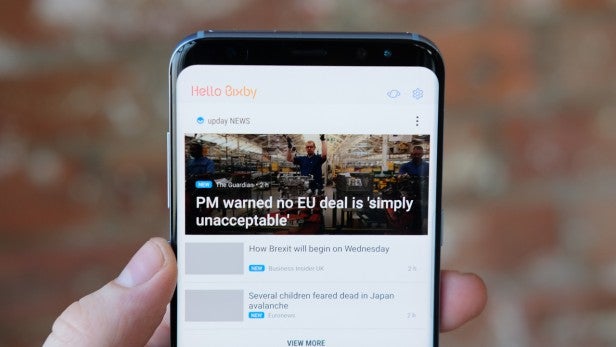
Samsung’s Galaxy S8 and Galaxy S8+ (2017) retained the curved edge-to-edge ‘Edge’-stye display, but the bezel was slimmed down – Samsung calls it an ‘Infinity Display’
‘Commercialisation’ possible shortly
On March 24, 2015, Business Korea quoted an unnamed Samsung Display official as saying: “The industry believes that the commercialisation of foldable smartphones will be possible in 2016.”
Project Valley?
Then just five days later, SamMobile reported on rumours of a device being built under the codename Project Valley, or Project V. The report noted that the handset was in “the extremely early stages of development”, and that it could be killed off “at any time”. It was claimed that Project Valley was a phone built in two parts that could be folded together in the middle.
By September, SamMobile was reporting that the Project Valley foldable smartphone would be launched in January 2016.
The handset was reportedly being tested in two hardware configurations: one with a (then) top-end Snapdragon 820 chip, and one with a more middling Snapdragon 620 processor.
Galaxy Fold rumours emerge
In late spring, 2016, a SamMobile report citing Korean news sources detailed how Samsung was working on a phone called the ‘Galaxy X’. As we now, of course, know, that eventually became the Galaxy Fold.
This handset was tipped to join the company’s flagship range alongside the Galaxy S8 and Galaxy Note 8 in 2017. The Galaxy X was tipped to be the official name for the Project Valley device that had been reported a year earlier.
According to the report, it would look like a normal smartphone, but would have the ability to fold out to double the size, to more closely resemble a tablet. Sound familiar?
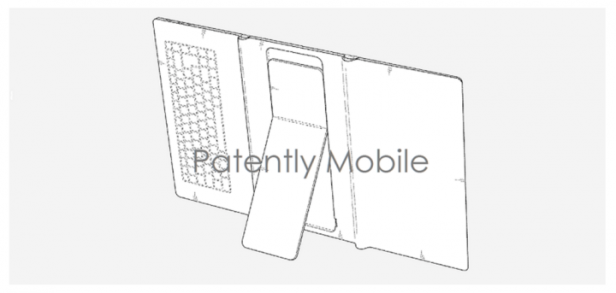
We’ve seen plenty of foldable phone/tablet patents from Samsung over the past few years
Two foldable devices?
Then in June, Bloomberg published an article that claimed Samsung was working on two new devices. One could fold in half “like a cosmetic compact”, while the other would feature a 5-inch display that could be unfurled into an 8-inch tablet.
The report noted that Samsung was planning to showcase the devices in 2017, and suggested that the handsets wouldn’t be marketed under the flagship Galaxy S brand.
Wearable, foldable tablet-phone
On June 30, 2016, a Samsung patent that was filed 18 months earlier was published, detailing a quirky new phone design.
The patent described a handset that could turn into both a wearable and a tablet at a user’s discretion, thanks to a stretchable display panel.
Galaxy Wings?
In September, tech blog GalaxyClub published a report about a Samsung patent that depicted a foldable smartphone.
In one of the patent’s supported images, there was a message written on the screen of the concept device, which read: “Dear Sir or madam! Thank you for purchasing our Galaxy Wings today! Now you can enjoy our virtual keyboard, while having maximum space for writing and reading your emails. Enjoy your time with Galaxy Wings!”
The device pictured appears to be a smartphone-sized object that folds out to offer keyboard extensions on either side, making it look like an elongated tablet crossed with a Bluetooth keyboard. Another image shows the device being bent over into a quarter of a circle, and even a semi-circle to be worn around the wrist.
Foldable tablet with a kickstand patented
At the end of September, Samsung was awarded a design patent that detailed a foldable tablet equipped with a built-in keyboard and kickstand.
The device had three foldable segments that, once opened, revealed a large screen and keyboard.
Related: LG G6 review
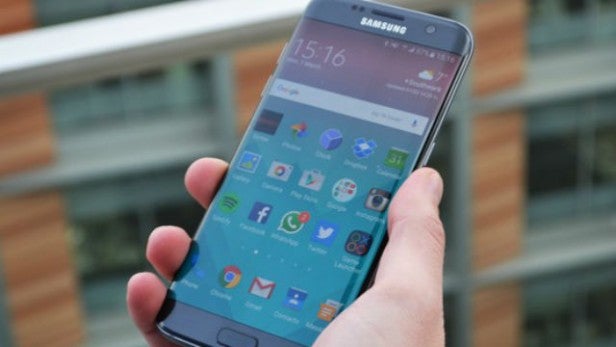
The curvy Samsung Galaxy S7 Edge (2016)
Official foldable phone renders?
Two months later, Samsung blog GalaxyClub revealed supposedly official renders of a foldable smartphone.
The renders depicted a handset that could fold over clam-style, but could still be used normally like a smartphone too. Unfortunately, it was never made clear which regulatory body these supposed patent renders were filed with, so it’s tough to verify their legitimacy.
Another rumour of two phones
Then in December 2016, a report from South Korea’s ETNews described how Samsung was working on two foldable phones, each with a very different design.
According to the report, Samsung was following a “two-track strategy” with the handsets. One device would feature a dual-screen setup that boasted a screen on either side of a hinge, while another would ship with a fully flexible OLED display.
The report also noted that Samsung would first release the former device to gauge consumer response, before deciding whether or not to push ahead with the flexible OLED option. The dual-phone was reportedly set for a 2017 release, although supply would apparently be limited to a “small amount” initially.
Foldable phone rumours heat up again
In January 2017, the Korea Herald reported that “sources familiar with the matter” said Samsung would “roll out more than 100,000 units of fold-out devices in the third quarter [of 2017]”.
Samsung was reportedly working on handsets that could fold out to form a 7-inch tablet, as the company found devices that fold inwards were too inconvenient for users. Apparently, Samsung recognised that users wouldn’t want to unfold their phone every time they wanted to use it.
The sources were quoted as saying: “Since the company already secured fold-in phone technology, it was not a big challenge to shift into the fold-out phones.” Importantly, the report noted that Samsung was still undecided over when to unveil the device.
Foldable screens at MWC 2017?
In February, South Korea’s ETNews said that Samsung Electronics and Samsung Display would demonstrate a folding smartphone prototype at Barcelona’s MWC 2017 trade show later that month.
The article noted that Samsung wouldn’t show the phone to the general public, but would instead demonstrate it to select invitees only. The device was, apparently, able to fold inwards like a book.
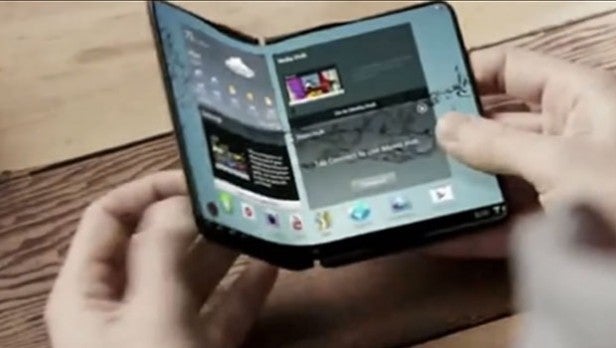
Samsung released a video in 2013 depicting a foldable smartphone-cum-tablet device
The ‘final stage of development’ – apparently
In March, after MWC 2017 was over, a follow-up report by ETNews suggested that Samsung was working on “the final step of development” of a foldable smartphone, with a view to building a working prototype in the third quarter of 2017.
The report suggested that Samsung showed an early concept of the device to a few select mobile network providers, and was plotting to build “thousands of prototypes” during the summer, which would be used to test quality and performance internally.
Samsung was also said to be hoping to provide some prototypes to major mobile networks, with the aim of mass-producing such a phone in 2018.
Bendy phone rumours shot down
On April 2, 2017, a supposed leak posted to Twitter by a Chinese tipster suggested that we’d see the Galaxy Fold handset released before the Samsung Galaxy Note 8.
But just two days later, a Samsung Display engineer poured cold water on rumours of a bendable phone coming in 2017.
At the Display TechSalon held in Seoul, Kim Tae-woong said: “Because the bezel-free display [on the Galaxy S8] currently sells well, we still have enough time to develop foldable display. The technology is expected to be mature around 2019.”
Bluetooth certification
Then in July 2017, it emerged that certification body Bluetooth SIG had certified an otherwise unknown Samsung device under the model number SM-G888N0.
We also saw the same model number device certified for Wi-Fi connectivity standards by the Wi-Fi alliance earlier in 2017. Usually when you see these certifications appear, it means a device is nearing completion and approaching a launch date.
However, at the time there was no telling whether this device was actually the Samsung Galaxy Fold, as had been speculated.
Durability issues to address
In January 2018, Chinese site ET News reported that Samsung would finalise its foldable smartphone’s design in March 2018, and start mass producing it in November 2018. That led to speculation that the foldable handset would either launch in December 2018 or in early 2019.
However, that same week, Samsung mobile chief DJ Koh poured lukewarm water on the hype train, telling the Korea Herald: “It is difficult to talk about the date of the launch now. We want to unveil the products properly but now seems a bit early…there are still durability issues that we need to address.”
A pair of juicy announcements
A July 2018 announcement raised hopes for a foldable smartphone once more, and also shed some light on the type of panel that could feature on the device.
“Samsung Display developed the flexible OLED panel with an unbreakable substrate and an overlay window securely adhered to it. Current-generation flexible display products attach a glass-covered window to their display that often breaks when severely impacted,” the company said at the time, adding that it was “especially suitable for portable electronic devices not only because of its unbreakable characteristics, but also because of its lightweight, transmissivity and hardness”.
The following month, DJ Koh confirmed that the much-rumoured folding phone would be more than just a concept − it was going to be treated to a release.
“I’m positive that we do need a foldable phone,” he said at the launch of the Samsung Galaxy A9 in Kuala Lumpur, according to SamMobile. “Possibly when we start selling the foldable phone, it may be a niche market, but definitely, it will expand.”
The crossroads between the present and the future – Samsung Developer Conference is where you’ll meet the knowledge needed to stay on tech’s cutting edge. #SDC18
Learn more: https://t.co/t66edOWIUi pic.twitter.com/bDZHuZVWee— Samsung Mobile (@SamsungMobile) October 18, 2018
Teaser time
In October 2018, Samsung finally confirmed that its folding phone was on the way. In a series of teasers that were posted on social media, the company hinted that we’d learn more at the Samsung Developer Conference on November 7.
However, prior to the show, SamMobile spotted a session in the SDC 2018 app, titled ‘New Galaxy UX’. “Introducing Samsung Mobile’s next UX,” the description for the session reads. “Explore the new Galaxy UX with Android 9.0 Pie (Beta Program), and see how a Foldable display creates a totally new experience.”
That same month, South Korean publication The Bell reported that Samsung’s foldable phone would feature one 7.29-inch OLED display and one 4.58-inch OLED display, adding that Samsung was initially in two minds about whether to equip the device with one display (the larger one) or two displays.
The Bell also claimed that mass-production of parts for the phone would begin in October 2018, with Samsung claimed to be aiming to produce between 500,000 and 1 million units per year.
Around the same time, it emerged that the South Korean firm had filed a trademark with the Korean Intellectual Property Office (via LetsGoDigital) for ‘Samsung Infinity-V’, the fully-foldable mobile display that would soon come to be known as ‘Infinity Flex’.
An underwhelming announcement
After Samsung’s teasers, we were so sure that the company’s folding phone would be unveiled at SDC. But it wasn’t. Not really. Instead, Samsung showed off an Infinity Flex prototype.
“Users now have the best of both worlds: a compact smartphone that unfolds to reveal a larger immersive display for multitasking and viewing content,” the company said at the time.
“The app experience seamlessly transitions from the smaller display to the larger display as the device unfolds. In addition, users can browse, watch, connect and multitask without losing a beat, simultaneously using three active apps on the larger display.”
Samsung added that the Infinity Flex display was flexible and strong enough to be folded and unfolded ‘hundreds of thousands’ of times without risk of damage, and that the tech would be ready for mass production within months.
You can see the unveiling from about 1:23:00 in the video embedded above.
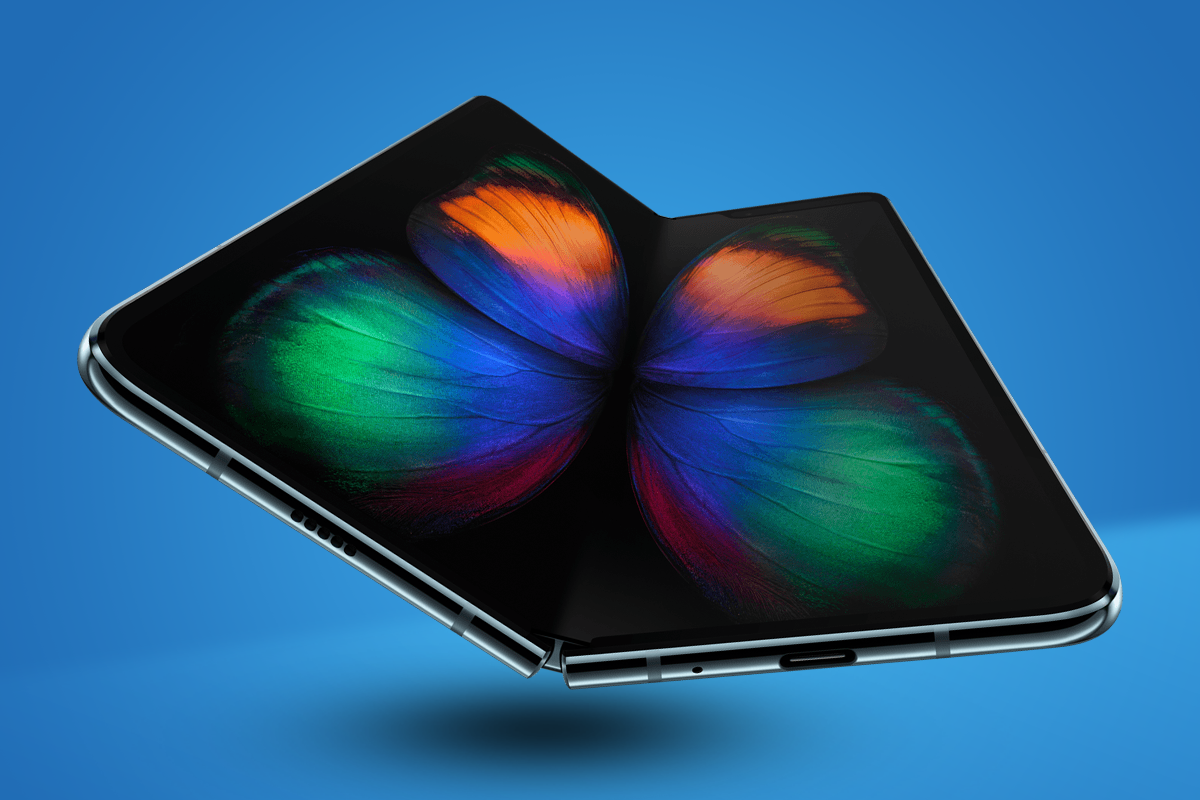
The Samsung Galaxy Fold finally launches
On February 20, Samsung launched the Samsung Galaxy Fold, alongside the Galaxy S10 range. While the handset’s design didn’t exactly blow us away, the handset’s £1799 price tag did − and not in a good way.
It was also a relief to see the device finally become official. The event also put an end to the excruciating speculation about what it would be called.
Unfortunately, it would be weeks before anyone was actually allowed to touch it.
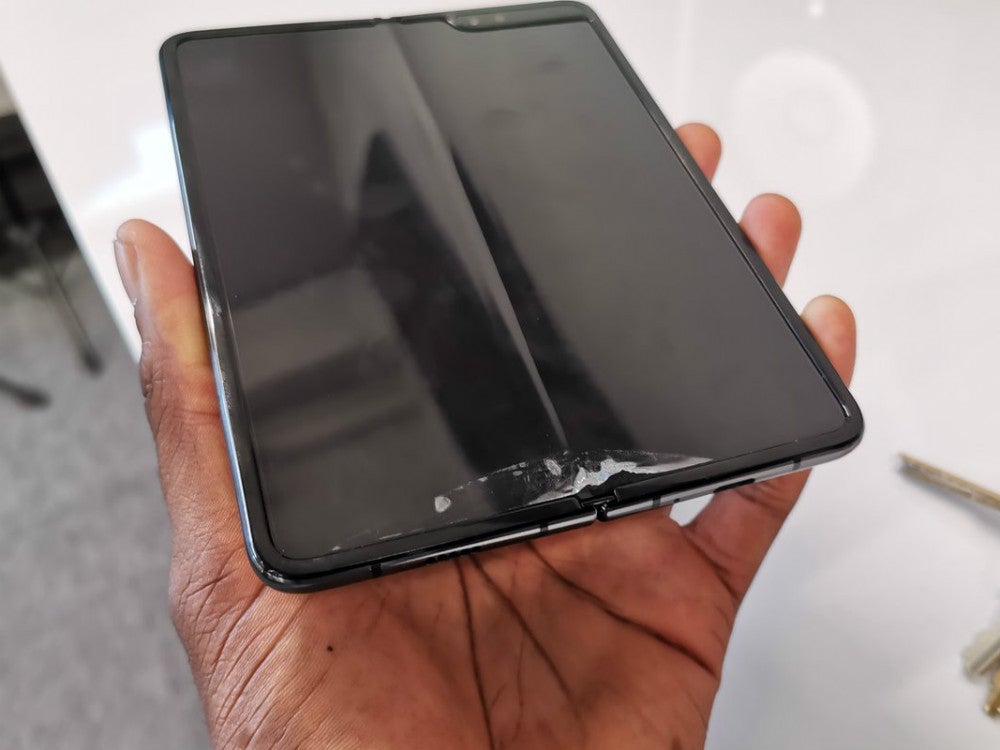
Image Credit: @MKBHD/Twitter
Foldgate
On April 15, Samsung finally started allowing technology journalists to get hands-on with the Samsung Galaxy Fold. By April 17, several high-profile reviewers, including YouTuber Marques Brownlee, Bloomberg’s Mark Gurman, The Verge’s Dieter Bohn, and CNBC’s Steve Kovach, had flagged up extremely worrying issues with the handset’s display.
In at least two cases, the reviewer removed a crucial screen layer, mistakenly assuming it was a screen protector. However, it isn’t yet clear why the other Galaxy Folds stopped working.
On April 22, Samsung officially announced that the folding phone’s launch had been postponed, just days before pre-orders were due to go live.
Are you still tempted by the Samsung Galaxy Fold? Let us know on Twitter @TrustedReviews.


